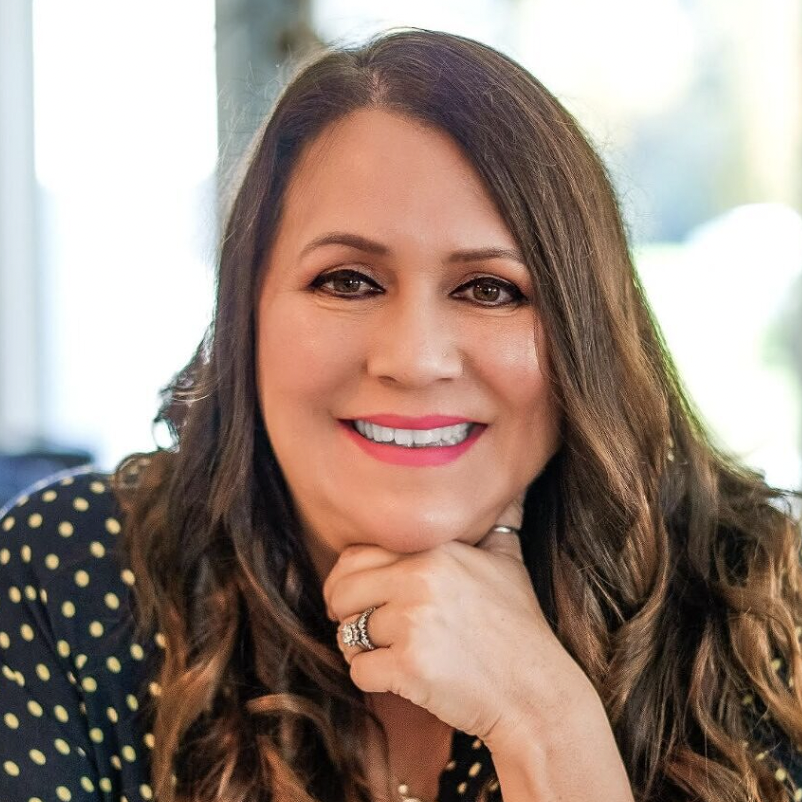
Once your book is published, you’re no longer an author, you’re a marketer. One task authors should spend time on after a release is getting book reviews.
But between all the different rules surrounding book reviews and the many methods for getting them, it can be difficult to build up a meaningful amount of reviews quickly.
For that reason, we decided to speak with Jenni Rempel, from NonStopReviews, and author of the Herbal Handbook series to talk about strategies for getting more book reviews.
Let’s hop right into the tips!
Table of Contents

Key Takeaways
- Importance of Book Reviews: Book reviews significantly enhance the visibility and credibility of your book, leading to increased sales and higher organic rankings on platforms like Amazon.
- Effective Methods for Gaining Book Reviews: Utilize strategies such as book giveaways, advance reader copies (ARC), and targeted marketing through social media and email lists to gather a substantial number of genuine reviews.
- Amazon’s Guidelines on Book Reviews: Avoid practices that violate Amazon’s terms of service, such as paying for reviews, review swapping, and scripted reviews, to maintain the integrity and credibility of your book’s feedback.

Free Universal Book Links
- Boost international sales by geotargeting readers
- Book store links update automatically based on availability
- Advanced marketing analytics
- Increase clicks with trusted links
Why Do Book Reviews Matter?
Book reviews set your book up for success in many ways.
One of the main ways is they increase the trust with the buyer because they see other people like your book too.
It’s called “social proofing.” The conversion rate of traffic hitting the sales page increases because of this.
Think about it.
If a potential reader is shopping and comparing two books, where one has ten reviews, and the other has 300, a reader is more likely to go with the book with 300 reviews – the trust factor is greater.
Another benefit of having lots of high-rated book reviews is increasing the organic ranking of your book inside the Amazon algorithm. Especially if they are high-rated verified reviews.
Tip!
- The algorithm seems to respond to recent verified reviews, so keeping reviews coming on a regular and timely basis even after launch matters.
We know that over 70% of consumers on Amazon don’t make it past the first page, so authors need to do everything they can to get their books there, and book reviews can help.
Now that you understand why book reviews are key, let’s jump into some tactics on how to build them.
Methods for Gaining Book Reviews
Jenni shared her favorite methods for gaining book reviews. Some of these methods are more passive, while others are more active.
At the start, you’ll likely find yourself getting more reviews from the active methods, but as time goes on, passive methods are going to be the most sustainable.
Book Giveaways
Mark Dawson, a legend in the indie publishing space, was recently asked, “If he could go back and do it all over again, what would he have done differently?”
His answer was to give away to his book relentlessly. The more fans, the more book reviewers, the more book reviews.
By doing this, he would have built up an audience much faster, and collected tons of book reviews (assuming your book is actually good!)
Asking Nicely For Advance Reader Team
Another tactic Jenni uses is to ask people if they are interested in receiving a free book in exchange for a review.
The book she sends out is an advanced reader copy (ARC), typically in PDF format. This method is 100% Amazon-approved.
She hits up anyone in her contact list, and even coaches her college-aged friend to approach people on campus. You’d be surprised how many people you know, and also how many people enjoy doing something nice for someone.
While Amazon does not allow reviews from family members and your immediate friends, your greater circle of contacts can be incredibly wide-reaching.
You would be amazed at how many people in the periphery of your life are more than willing to help you out.
Friends of Jenni have had lots of success doing this strategy at author events or conferences. The adage is true – If you ask, they will deliver… reviews!
One thing to keep in mind from this method is that reviews gained from it will NOT be verified reviews. But if you alert these reviewers of when your ebook goes free, they can then change it to a verified review.
Make Your Book Free
If you are exclusive with Amazon via Kindle Select, Amazon gives you five free promotion days every quarter. This is a great opportunity for indie publishers to gain reviews as they can mark the price of their kindle books down to $0.
This is key because now all the past readers you used with your advanced reader teams are now able to “buy” the book for free and leave a verified review.
Think about it, are people more likely to buy your book at $9.99, or $0?
Now you can align it with your book promotions which we’ll cover next. When you give your book away, you don’t earn anything from sales, but it allows you to stack up more reviews before setting a price. You can target all the readers who took an advance copy of your book and let them know about the free promotion also.
This will create a verified review and entirely approved by Amazon. Amazon will also let you gift copies of your book to readers (this works only in an US account to US readers). While these reviews aren’t verified, the small price is well worth the sacrifice to get the ball rolling early.
One of Jenni’s favorite strategies for building reviews en-masse is via Facebook using 3 methods: personal groups, targeted ads, and niche-specific groups.
For a personal group, Jenni targets an ad inviting people to like her Facebook Author page.
Anyone who likes her Facebook author page is then eligible to be invited to her Facebook group, where she can follow up with them and post whatever content she’d like.
With targeted ads, you can directly ask for people interested in reading your ARC and giving their honest opinion of it.
You can also approach other groups in a similar niche as yours and create a post asking for reviews (usually with the admins permission) or interact directly with members of the groups.
Networking with other authors and book influencers is key as a first-time indie author in building those early reviews.
It’s labor-intensive but worth it.
Linkedin has been another great platform for Jenni, where she uses Linkedin Navigator to target the right people.
Requesting via Email List

As we stated in our email marketing provider article, members of your email list are your biggest fans and want to see more content from you.
They will not mind being asked to leave a review for your book if they believe it will benefit you!
Book Promotion Websites
Jenni has found tons of success with book promotion websites such as freebooksy.com or thefussylibrarian.com.
With these paid services, you choose the date you want your book to be featured in their newsletter to their readers.
Bonus points if you align that to date to coincide with your promo dates on Amazon.
These services will give you a whole bunch of initial sales which is essential for the amazon algorithm, as well as several reviews.
- Bargain Booksy
- Ereader IQ
- Robin Reads
- Book Sends
- Ereader News Today
- CraveBooks
- And many more
Some of your readers/reviews won’t be able to post on Amazon, typically because they don’t have an amazon account or because they haven’t spent $50 in the last 6 months on Amazon.
If that’s the case, don’t worry. Point those readers to Goodreads, which is another popular site people use to find books. Interestingly enough, Amazon or Goodreads too!
Include a Call To Action To Review in Your Book
Tip!
- A more active method, of generating reviews is via a call to action inside your book.
In Jenni’s case, she leaves this call to action after the 10th chapter, with a quick note saying:
“If you’ve enjoyed the book, could you help me out and leave a review, it helps other people gain access to this information as well.”
She will usually include some graphics and a catchy heading, to make the reader pause on the page.
In order to ensure that the link stays live throughout the lifetime of the book, Jenni hosts it via a Geniuslink for a vanity URL + custom domain that has an editable landing page destination, as well as the ability to send the reader to the correct Amazon store.
A QR code directing a reader to the review page makes it easy for readers to simply scan the code and arrive directly at your book. And don’t hesitate to repeat your request for a review at the end of the book too. In marketing, repeating your request is more likely to bring action than a single insert.
Jenni also includes an author email and personally invites readers to reach out to her.
That personal touch goes a long way towards building a long-term fan and has the added benefit of capturing an email address for future communications, such as a new book launch.
Amazons Rules on Book Reviews
We’ve gone over some methods for gaining book reviews that work, but now it’s time to go over some tactics that you should avoid so as not get into trouble with Amazon.
Amazon’s #1 priority is to have integrity in the review area so they watch for these tactics. While Jenni is not as familiar with the algorithms of other online bookstores, they likely have pretty similar rules.
Say no to Scripted Reviews
The first major don’t on Jenni’s list, is to avoid getting scripted reviews. If a reviewer asks you what you want them to write, don’t tell them!
Have them write an honest review, good or bad, based on their experience.
You’d be surprised just how much weight consumers place on the words left in reviews.
No Review Swapping
This is an arrangement between two authors in which each person agrees to read and review each others books.
This could technically be bypassed by using the account of a significant other or family member although we want to utilize sustainable, passive, review strategies.
Payment for Reviews
Another big no-no is paying or incentivizing someone directly to leave a review. Offering a cup of coffee or being part of a giveaway is not allowed. Reviews need to be readers honest opinions.
Household Leaving Reviews
The last “Don’t” of Amazon is someone from your household or connected to it leaving a review on your book. Amazon’s systems are very advanced and will pick up on this very quickly.
If you sent a package to your friend from your Amazon account, and then that person goes to leave a review, it will likely get flagged.
At the end of the day, if you or somebody you know breaches these rules, it’s not the end of the world.
Your account won’t be shut down unless it’s an extreme example. But it’s important to be mindful of the red flags Amazon looks at when it comes to reviews

Introducing:
Booklinker Collections
One landing page for all your books. 100% free.
One link for easy sharing of your books across your backmatter, websites, emails, and social media.
Frequently Asked Questions
How Long Does It Take For Reviews to Go Live?
The amount of time it takes for a review to go public on Amazon varies. Some reviews go live immediately, while others will take up to one week.
Last year, over Christmas, Amazon was massively understaffed, and it took up to 10 days for reviews to go live. Be patient, they will show eventually!
How to Deal With Negative Reviews
Jenni says there is really nothing you can do about a negative review, except bury it with positive ones. Sometimes those bad reviews are left by competing authors (which is really unfortunate) but sometimes they are legitimate feedback on your book.
If they note something like “lots of grammatical errors”, this is something you can address proactively.
Believe it or not, some experts have suggested that a few negative reviews actually make the book more “real.”
But the overwhelming predominance of positive reviews is the best way to deal with any reviews you aren’t happy with, so keep pressing forward!
What’s the Difference Between Verified vs Unverified Reviews?
Verified reviews on Amazon signal that the reader went through amazon’s checkout process before leaving a review. Amazon places more weight on verified reviews and also lets them show on international Amazon product pages, while unverified reviews do not.
Verified reviews appear in every single amazon store regardless of country, making them essential for authors with an international audience.
Should I Reach Out to Top Reviewers?
This is an old strategy that is not really recommended anymore. It’s somewhat time-consuming and doesn’t have great results.
On top of that, the reviewer’s contact info is now removed making contacting them directly difficult. Your time is better spent getting reviews other ways.
Conclusion
Reviews are one of the most impactful metrics Amazon and other online retailers use to rank books in their organic search algorithm.
When an indie author is first starting out, they may want to focus on some more manual methods for building reviews.
As time goes on, and they’ve built up a decent amount of reviews, relying on a more passive review strategy makes more sense.
If you have any questions on building book reviews for Jenni or the Booklinker team, be sure to leave a comment and we’ll get back to you shortly.

Introducing:
Booklinker Collections
One landing page for all your books. 100% free.
One link for easy sharing of your books across your backmatter, websites, emails, and social media.
Author
-
Jenni Rempel is the owner of NonstopReviews.com, a company dedicated to helping indy authors and publishers gain reviews through done-for-you strategies. This family-run business helps authors who haven’t even published their first book to authors with several published books already. Jenni is also a passionate gardener, herbalist, and the author of 3 books from The Homesteader Herbs Series.
https://nonstopreviews.com%20



